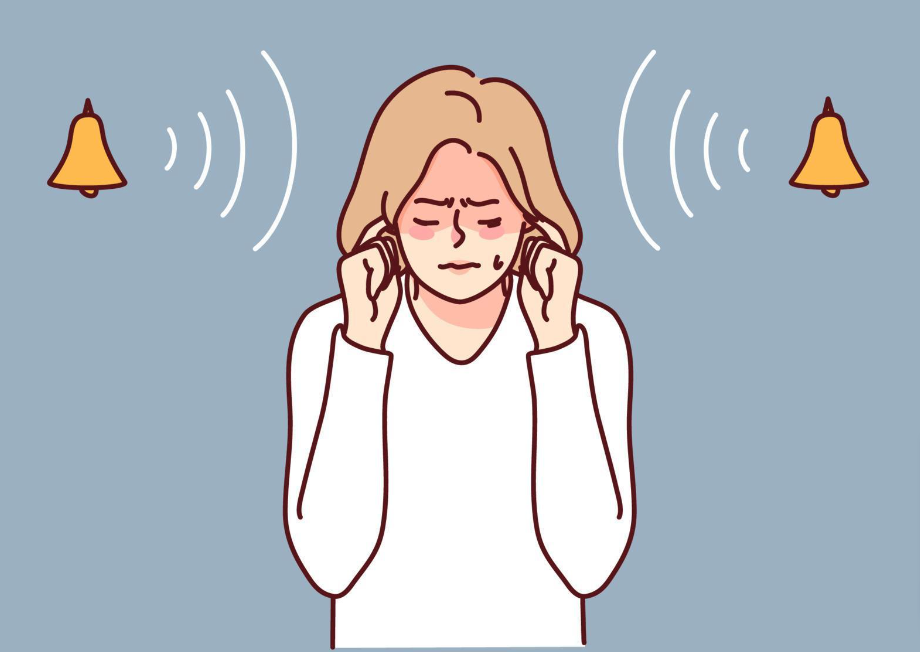Understanding misophonia: A growing focus in mental health
March 24, 2023 - Reading time: 7 minutes

As a clinical psychologist specialising in ADHD, today I want to discuss a topic that has recently gained traction in the mental health community - misophonia. Misophonia is a disorder characterised by a strong negative reaction to certain everyday sounds, usually sounds from other people. These reactions can seriously disrupt a person's life and can range from anger and panic to fight or flight reactions. Several studies have recently been conducted to investigate the prevalence and impact of misophonia.
A recent study led by King's College London and the University of Oxford found that 18.4% of Britons face major challenges in their lives because of a particular voice. However, only 13.6 percent of study participants were familiar with the term misophonia, and only 2.3 percent identified with the disorder. This finding means that many people may not be aware of their misophonia.
Maria Case Study
Let me share the story of one of my patients, Maria, to highlight the impact misophonia can have on a person's life. She comes to me in 2022 and struggles with unbearable chewing, sniffing and other daily noises. The sounds caused intense anger and panic, leaving him trapped and helpless. Maria's condition made it difficult for her to participate in social or work situations, leading to feelings of isolation and depression.
After thoroughly assessing Maria's condition and understanding her specific triggers, I developed a tailored treatment plan that included a combination of the following strategies:
-
Cognitive Behavioral Therapy (CBT): CBT helped Maria identify and challenge her negative thoughts and beliefs associated with her misophonia triggers. Through CBT, she learned to replace these thoughts with more positive and rational ones, reducing her emotional distress.
-
Mindfulness and Relaxation Techniques: Maria was taught various relaxation techniques, such as deep breathing exercises, progressive muscle relaxation, and mindfulness meditation. These techniques helped her stay calm and manage her emotional responses to triggering sounds more effectively.
-
Sound Therapy: We explored using sound therapy as a way to desensitise Maria to her triggers. She was provided with a selection of white noise or natural sounds to play in the background, masking or reducing the impact of the triggering noises.
-
Psychoeducation: I provided Maria with information on misophonia and its potential causes, helping her understand her condition better. This understanding helped reduce her feelings of helplessness and self-blame.
-
Support Groups: Maria was encouraged to join a local or online misophonia support group to connect with others who shared similar experiences. These connections provided her with a sense of belonging and helped her learn coping strategies from others dealing with misophonia.
-
Communication Skills: We worked on developing Maria's assertiveness and communication skills, allowing her to express her needs and feelings regarding her condition to others effectively. This enabled her to create a supportive environment both at home and in the workplace.
Through a combination of these strategies, Maria was able to gain better control over her emotional reactions to triggering sounds and improve her overall well-being. She gradually started participating more in social and work situations and experienced a reduction in her feelings of isolation and depression.
Table 1: Key Findings from Recent Studies on Misophonia
|
Study |
Key Findings |
|
King's College London & University of Oxford |
18.4% of UK population affected; equally common in men and women; tends to be less severe with age |
|
PLOS ONE |
80% of participants had no particular feelings towards normal breathing or yawning; less than 25% felt the same about slurping, chewing gum, and sniffing |
As a clinical psychologist, it is very important to understand the underlying factors and possible treatment options for misophonia.
Table 2. Overview of clinical features and possible treatment options
|
Characteristic / Treatment Option |
Description |
|
Standalone Condition |
Misophonia is not part of other disorders like depression and anxiety |
|
Prevalence |
Affects approximately 18.4% of the UK population |
|
Awareness |
Many people may not be aware that they have Misophonia |
|
Future Research |
More research is needed to understand the causes and potential treatment options |
In conclusion, misophonia is a condition that is receiving increasing attention as more research is conducted. As clinical psychologists and mental health professionals, we need to stay abreast of new research, understand the prevalence and impact of this condition, and explore available treatment options.
By raising awareness, we can assist individuals like Maria in finding the support and resources they need to cope with and manage misophonia. We have created a 20-question quiz to help identify misophonia symptoms. Feel free to take our complimentary misophonia test now.
Article written by:
Dr.Adeel Sarwar, Ph.D., Clinical Psychologist
Further reading
Wu, K. (date unknown). Research shows that almost one in five people suffer from misophonia. India eats.
Hayward, E. (date unknown). Misophonia: 1 in 5 people suffer from noise intolerance.

